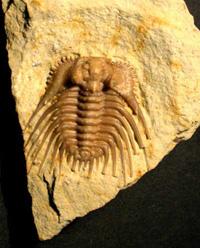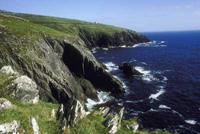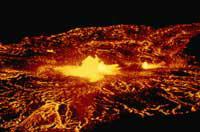Quaternary, whether or not.

This was explained in an article in the scientific journal Nature last year: “Silurian, Devonian, Carboniferous: these names seem as strong and immobile as the rocks themselves. But in reality, just as it happens with the hair or length of the skirts, the geological distributions made in the chronology of our planet tend to change. Geologists discuss the boundaries between periods and do not agree on their age. The year the Jurassic ended, for example, has had an incidence of 30 million years since its date in 1930.”
It is clear that geologists have nothing clear when the stages that separate the history of the Earth end and begin. For the determination of the periods several variables are taken into account: composition of the rocks, oxygen concentration in the ice, fossil record, etc. For example, a fossil of a marine invertebrate was decisive for the distribution of the Silúrico and the Devonian. The animal is already lost, but its fossil served to determine the limit.
On many other occasions, however, there are no conclusive indications, and there are quite a few fluctuations in the names of the periods and at the end date of each of them. Look, for example, at the Jurassic: In 1987 it was decided that the period ended 131 million years ago. To do this, they were based on the amount of potassium that became argon in a mineral called glauconite.
However, they later learned that argon leaves the glauconite, which makes the mineral look younger. Therefore, to know the end of the Jurassic, the amounts of potassium and argon in basalt were finally used, and it is believed that 145.5 million years ago ended.
In what period do we live?

Although they have agreed on it, the same does not happen with the Quaternary. The debate began a long time ago and geologists have been unable to decide what name they have and what duration the time we live in has.
Some believe that we are now in Neogen. This period began 23 million years ago, after Paleogen. But others believe that the Neogen ended about 2 million years ago and that we have lived in the Quaternary ever since.
Lately the debate has been hardened. And it is that, after an international investigation that has lasted fifteen years, (supposedly) a group published last year the definitive geological chronology. And in that chronology does not appear the Quaternary!

According to supporters of accepting the quaternary, the question is not just to point or not. It must be taken into account that thousands of researchers identify this time and are working on it. In addition, there is no doubt that this period presents different geological characteristics, such as the various glaciations in which, at the time of the beginning of the period, icebergs and glaciers proliferated. In addition, something very special has happened in the Quaternary: a human species has been created on planet Earth.
After hearing the reasons of geologists in favor of the Quaternary, the head of the international group that has determined the chronology has apologized and has affirmed that the matter could be redirected. But do not go back and insist again that there is nothing special to say that the Quaternary is another period.
Decision `democratic'
Finally, to give a definitive solution, geologists have decided to vote. They have voted and... They decide to accept in some way the quaternary. They have also determined that the period began 2.6 million years ago.

But with it all has not been finished. The next meeting will take place in September in the Belgian town of Leuven, where they will have to decide how to classify Quaternary. Will they decide that it is a differentiated period or will they classify it within the Neogen period? What's more, it may not be included in the official chronology, but it may be accepted informally.
The geologists themselves do not have many expectations. Whatever the decision, it will be difficult for everyone to agree and accept the outcome. We will have to wait until September to know what they decide, but perhaps the debate can last many years.
However, while discussing the Quaternary, geologists continue to work to date periods with greater precision. They have also been challenged: The objective is that by 2008 the periods of the last 600 million years are clearly differentiated. Seeing the debate that has provoked the last 2.6 million years, they have nothing to do with it!
Published in 7K.
Buletina
Bidali zure helbide elektronikoa eta jaso asteroko buletina zure sarrera-ontzian











